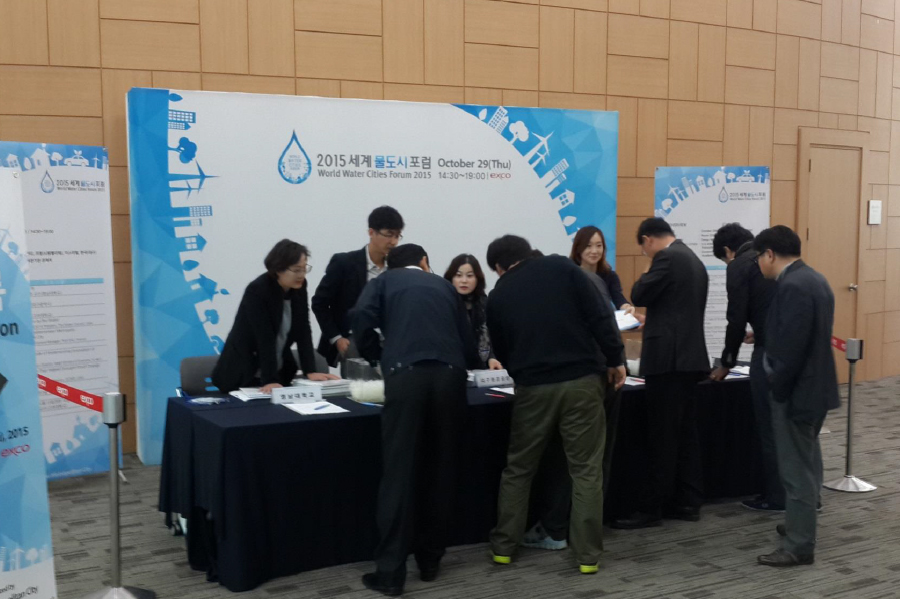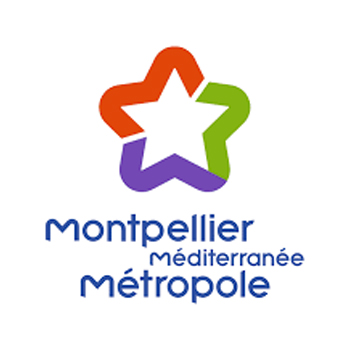Past WWCF
2015
Past WWCF 2015
Overview
- Date
- 29 September 2015
- Venue
- EXCO Room 325, Hotel Interburgo EXCO, Daegu, Republic of Korea
- Host
- Daegu Metropolitan City
- Participants
- Government officials, Water Specialists and Academics from 5 Cities in 4 Countries and Organizations
- Program
-
- Water for Cities in 21stC
- Gathering Place by the Water
- Montpellier Mediterranean Metropolis : a Water Capital City
- Cracking the Code of Implementing Innovation in Water Utilities
- The Big Gamble That Helped Drought-Proof Orange County, California
- Daegu & Korea Water Cluster
- Panel Discussion









Introduction of participants in WWCF 2015
Daegu Metropolitan City - Republic of Korea


About the City/Organization
| Population | 2.5 million |
|---|---|
| Main industry/ economic sectors |
Water, futuristic vehicle, medical, IoT, robot, auto, machinery, metal industries |
| Source of water supply | Nakdong river, Unmun dam, Gachang dam, Gongsan dam |
| Website | www.daegu.go.kr/english/ |
Introduction of the City/Organization (focusing on water-related issues)
As Korea’s water hub, Daegu Metropolitan City fosters water industry through Korea Water Cluster, core infrastructure for innovative water technology development and commercialization. The city forges global water partnership to address global water issues by annually hosting the World Water Cities forum.
As a sustainable and ecological city, Daegu Metropolitan City has implemented the Nakdong River and urban stream restoration project and upgraded water treatment infrastructure from 1983 to 2018 with investment of USD 3.6 billion.
Since the city successfully hosted the World Water forum in 2015, the first national water industry cluster “Korea Water Cluster (KWC)” has been established on 650,000㎡ site in Daegu National Industrial Park with investment of USD 300 million. KWC is equipped with water industry promotion facilities, demonstration facilities and industrial complex. Daegu provides water companies in the KWC with one-stop support ranging from water technology R&D, verification/certification to global market expansion. In order to address global water issues, Daegu has implemented Water Treatment Facility Donation programs for the developing countries in collaboration with 16 KWC’s water companies. In 2017, those companies voluntarily donated water treatment facility to Vinh Long province, Vietnam. The water treatment system enabled 500 households to have access to clean and safe water.
Daegu City has also participated in the government's ODA project to create a Water Treatment Techno Park in Colombia with a total budget of USD 9.3 million, and is seeking to build water-related facilities, nurture manpower, transfer technology and enhance cooperation between Korea and Columbia from 2019 to 2022. In an effort to enhance the global partnership, Daegu is annually hosting the Korea International Water Week (KIWW) and World Water Cities forum (WWCF). In addition, IWRA’s ⅩVII World Water Congress, the largest water resources event, will be held in Daegu, Republic of Korea from May 11 to 15, 2020.
Israel - Israel

About the City/Organization
| Key summary | Israel NewTech was founded on the belief that the Israeli water and renewable energy sectors have the talent and capability to be strong growth industries for the country, and to play an important part in establishing the “next generation oasis” for the world’s rising needs. This pioneering national program is led by the Ministry of Economy and Industry, and is supported by a number of additional Israeli government agencies. Israel NewTech helps to advance the water and renewable energy sectors by supporting academia and research, encouraging implementation in the local market, and by helping Israeli companies succeed in the international arena. |
|---|
Milwaukee - USA

About the City/Organization
| Key summary | - The largest city in Wisconsin, the fifth largest city in the Midwest - Milwaukee became an Innovating level city in the Global Compact Cities Programme in 2009. The Water Council in Milwaukee was recognized as one of 30 leading innovators in America by the U.S Global Leadership Coalition (USGLC). |
|---|
Montpellier Méditerranée Métropole - France

About the City/Organization
| Population | 458 000 (2015) with an urban area of 1 000 000 |
|---|---|
| Main industry/ economic sectors |
Innovation, Health, Numeric, Agroecology, Wine and Tourism… |
| Source of water supply | The main drinking water resource comes from a strategic karst aquifer sources (for more than half of the inhabitants), complete by two drillings and is supplemented by a resource exogenous to the territory (the water of the Bas-Rhône which requires more treatment). |
| Website | www.montpellier3m.fr/ |
Introduction of the City/Organization (focusing on water-related issues)
Montpellier Metropole, lies between the Mediterranean Sea and the Cevennes foothills. Its geology is typical of the Mediterranean regions, ranging from karst reliefs to an alluvial plain, bordered by a barrier beach. The territory is crossed by two coastal rivers. The coastline, once swampy, is dotted with ponds. The climate is marked by an alternation of drought and Cevennes episodes, causing floods. The central and coastal part is now largely urbanized and the aquatic environments have been largely artificialized.
In a context of climate change, the metropolis must take up 5 challenges:
- Restore degraded environments
- Save and share water resources equitably,
- Protect aquatic resources and environments in good condition,
- develop solutions based on nature and limit soil artificialization
- develop a memory and culture of water
Orange County - USA


About the City/Organization
| Key summary | The 'Orange County Water District is a California special district that manages the groundwater basin beneath central and northern Orange County, California. The groundwater basin provides a water supply to 19 municipal water agencies and special districts that serve more than 2.4 million Orange County residents. The Orange County Water District's service area covers approximately 350 square miles and the District owns approximately 1,600 acres in and near the Santa Ana River, which it uses to capture water flows for groundwater recharge. Additionally, the Orange County Water District owns approximately 2,150 acres of land above the Prado Dam in the Prado Reservoir and uses that land for water conservation, water storage and water quality improvements.[1] The water district's administrative offices and the Groundwater Replenishment System facilities are located in Fountain Valley, while it also operates various groundwater recharge facilities located in Anaheim and Orange. |
|---|